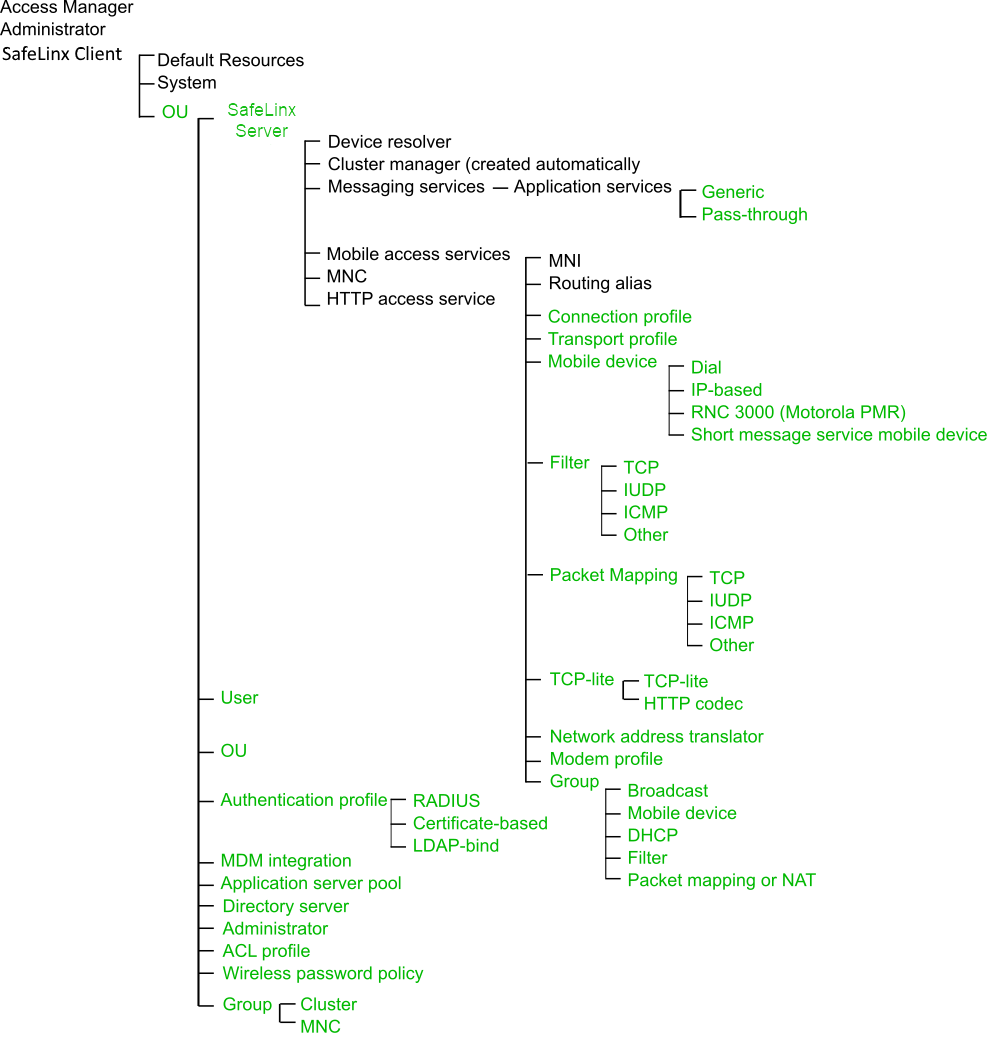Types of resources
Before a deployment can support client connections, you must add components to the SafeLinx Server. You use the SafeLinx Administrator to add and configure components. These components include resources to support HTTP access services, mobile access services, and messaging services, and resources to establish security and facilitate administration.
You add resources to SafeLinx to support the needs of your deployment. Some types of resources are common to all deployments; for example, every deployment includes an access manager and a SafeLinx Server. Other types of resources are installed only if you intend to support specific types of network access or authentication, or to manage aspects of the deployment. For example, to support VPN connections from SafeLinx Clients, you must add a mobile access service, and to use a RADIUS server for authentication, you add a RADIUS authentication profile.
You add resources and specify their properties from the SafeLinx Administrator administration tool. When you add a resource, you assign it to a specific organizational unit (OU). For more information about organizational units, see Organizational units.
The following figure shows the full range of resources that you can add to your deployment. To add resources that are shown in green, you right-click the organizational unit (OU) in which you want to create the resource. To add the resources that are shown in black, you right-click the parent resource.
